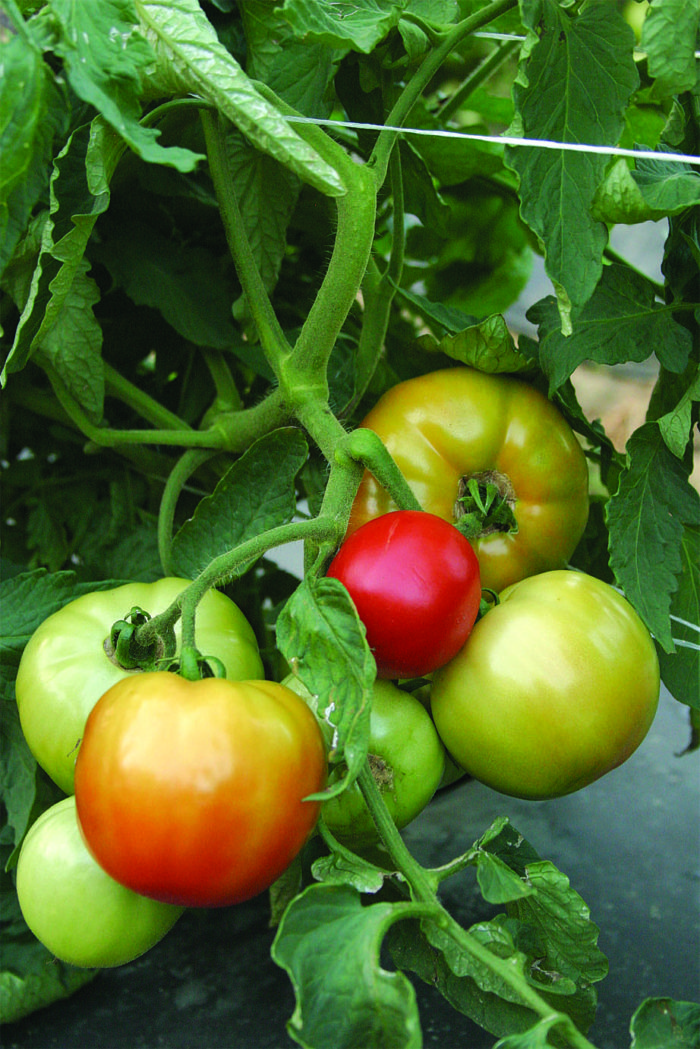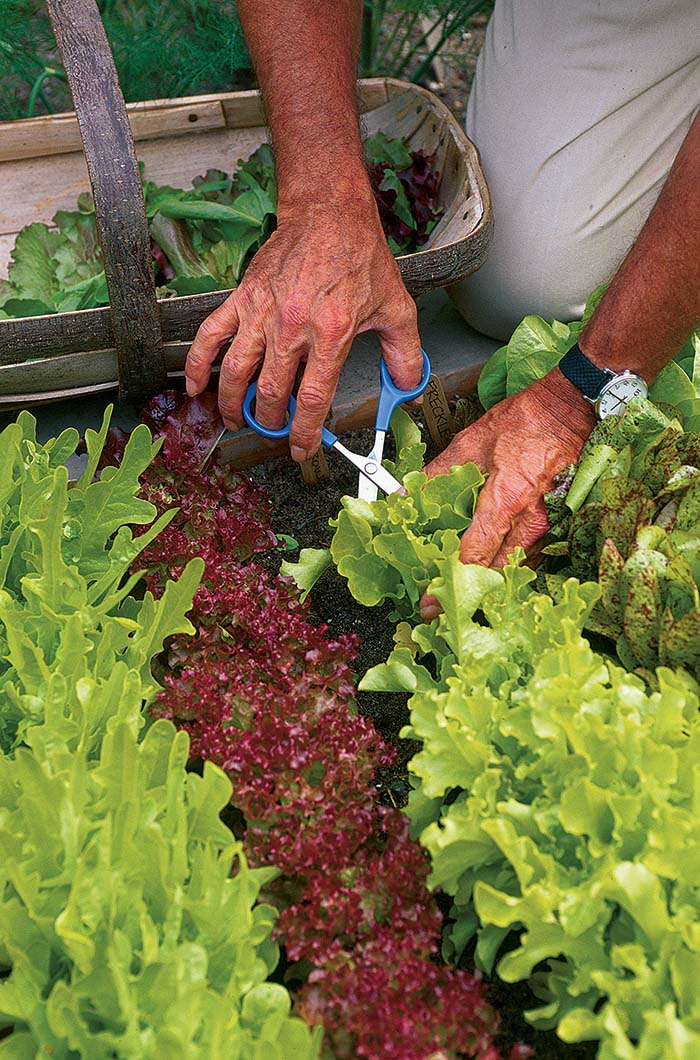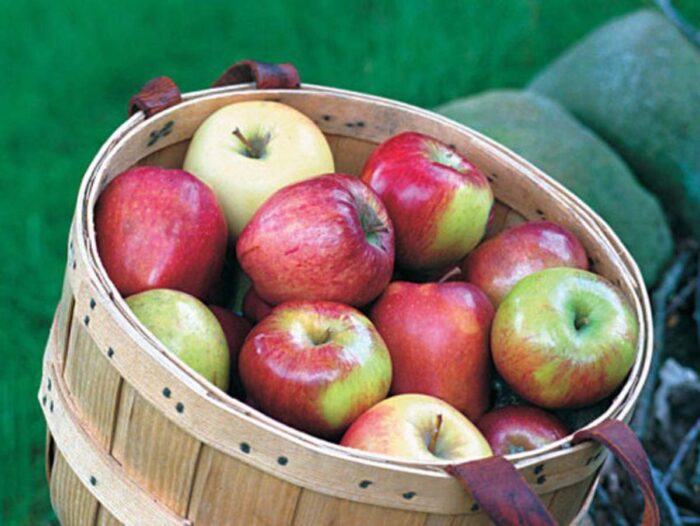
Fine Gardening Project Guides
Fruits and Vegetables
Growing your own food is easy with the help of this comprehensive step-by-step guide
Whether you’re trying to reduce the number of trips to the grocery store, get your children engaged in some outdoor activities, or grow your own food, vegetable gardening at home is the answer. But growing fruits and veggies isn’t always as easy as it seems. Issues with spacing, pests, and diseases, or even figuring out how to support a tomato plant, can leave even the most seasoned gardeners scratching their heads. Enter this comprehensive project guide, which will lead you down the path to an incredible, edible harvest. The assortment of articles and how-to videos found in this collection will provide you with expert tips and tricks on growing fruits and vegetables no matter the size of your garden space.
The guide starts with the basics, such as seed starting and transplanting, watering the right way, and fertilizing naturally. Next, it covers the ins and outs of growing various crops, including tomatoes, warm-season crops like watermelon, cool-season crops like lettuce, and popular fruits like strawberries and apples. You’ll also find advice on growing herbs and edible flowers.
Discover the joy of your own homegrown food this season, and let this project guide from Fine Gardening lead the way.
Choose a Chapter
Search Guide-
Basics

A wise gardener once said that all you need to grow a tomato is “sun, soil, and sprinkles.” That may be somewhat true, but growing fruits and vegetables successfully is a lot more involved. What kind of soil? How much sun and water?
Anyone who has looked at browning squash plants in August and wondered what on earth went wrong knows there are particulars that cannot be ignored when growing food crops. This chapter will take you through getting your garden off on the right foot. We’ll address how to plan and site your garden for the best harvest, amend the soil for the proper level of fertility, respond to certain pests and diseases, and provide supplemental water throughout the season. We even have regional advice from expert edible gardeners in your area, because zonal range can directly impact what you grow and how you grow it. And don’t miss the section on extending the season in the cooler months, which offers invaluable tips on getting the most out of your plot.
-
Tomatoes

Even folks who don't consider themselves "vegetable gardeners" grow tomatoes. Why? Simply put, they are the tastiest edible out there. Tomatoes are also one of a select few vegetables that taste much better when they're homegrown. The fruits are sweet, juicy, and have thin skins, unlike grocery store offerings that generally taste like a cardboard box. But tomatoes aren't the easiest things to grow. They have certain requirements that need to be met if you're going to enjoy the harvest of your dreams. It all starts with selecting the right variety based on where you live (certain types thrive in cooler weather, while others need many weeks of intense heat) and how much space you have (determinate tomatoes stay short and compact, while indeterminate varieties will grow 8 feet tall or more). In this chapter you'll get expert advice on everything from selecting the right tomato, watering and fertilizing, and even building a support structure that won't topple over under the weight of all those delicious red globes.
-
Cool-Season Crops

What exactly are "cool-season crops"? The short answer is "Vegetables that can grow at cool soil temperatures, which generally range from 50° to 70°F." These veggies include the obvious—like peas and lettuce—but they also encompass root vegetables like onions, beets, radishes, and carrots. Then there are oddball crops like garlic, which is planted in cooler seasons and needs several weeks to mature before harvesting. And finally, we can't forget about asparagus, one of the only perennial vegetables that is planted in early spring and comes back year after year. As you may have guessed, each cool-season crop has its own quirks, so planting and care vary widely. But don't be discouraged! In this chapter we highlight the most popular cool-season veggies and take you through step-by-step instructions on how to plant, maintain, and harvest your crop.
-
Warm-Season Crops

Warm-season crops are the darlings of the vegetable world. These are likely the first veggies that come to mind when the topic of edible gardening is broached: corn, eggplant, summer squash, and those always-popular peppers. These are all crops that do best when the sun is strongest and the temperature is 75ºF or warmer. Usually these crops take longer to mature and therefore need extra care as the season progresses. Because warmer weather brings with it a plethora of pests and diseases, it's important to have a plan of action ready to protect your crops. The following chapters will provide you with everything you need to know about growing a specific crop and nurturing it through the summer. How can you tell if an ear of corn is ready to be picked? Watch for the tell-tale lean. Read on to find out exactly what that means.
-
Herbs

No vegetable garden is complete without a few choice herbs. Much like tomatoes, the herbs you grow yourself have far better flavor than anything you find in a plastic container at the supermarket. (Herbs start to lose their potency the second you cut them, so imagine how terrible a bunch of basil will taste after traveling across the country in order to appear on the shelves of your local grocery store.) All of that flavor, however, needs fertile soil to develop. Most herbs require full sun, even moisture, and a moderate amount of fertilizer. Too much or too little of any of those things can spell disaster for the harvest. This chapter covers the dos and don'ts of growing an array of perennial herbs like oregano and rosemary, and it also takes a deep dive into the particulars of annual herbs like basil and cilantro. If you've always wondered how to stop your cilantro from bolting too early, we have the tricks you need. Another great thing about herbs is that they do well in containers (sometimes better, in fact), so this chapter explores how to grow your favorites in a pot. Last but not least, we cover techniques for growing edible flowers, the perfect garnish for any veggie garden.
-
Fruits

Every proper meal ends with dessert, and that's why we decided to end this project guide on a sweet note. Whether you're interested in growing a mini orchard in the backyard or just planting a few strawberry plants to make your kids happy, the following subchapters have the information you'll need. We cover tips on selecting the right-size apple tree for your space, growing figs in cooler climates (yes, it can be done), and building a sturdy trellis to ensure that your raspberry harvest is huge. Fruit trees and berries are susceptible to an array of different pests that may not affect other edible crops, so the articles in this chapter will teach you how to avoid those pests if you can and how to get rid of them in an organic way if they attack. Many assume you need acres of land to grow fruits of any kind, but that's not the case. Read on to find out how to fill any size space with lemons, grapes, blueberries, and other fruits aplenty.




